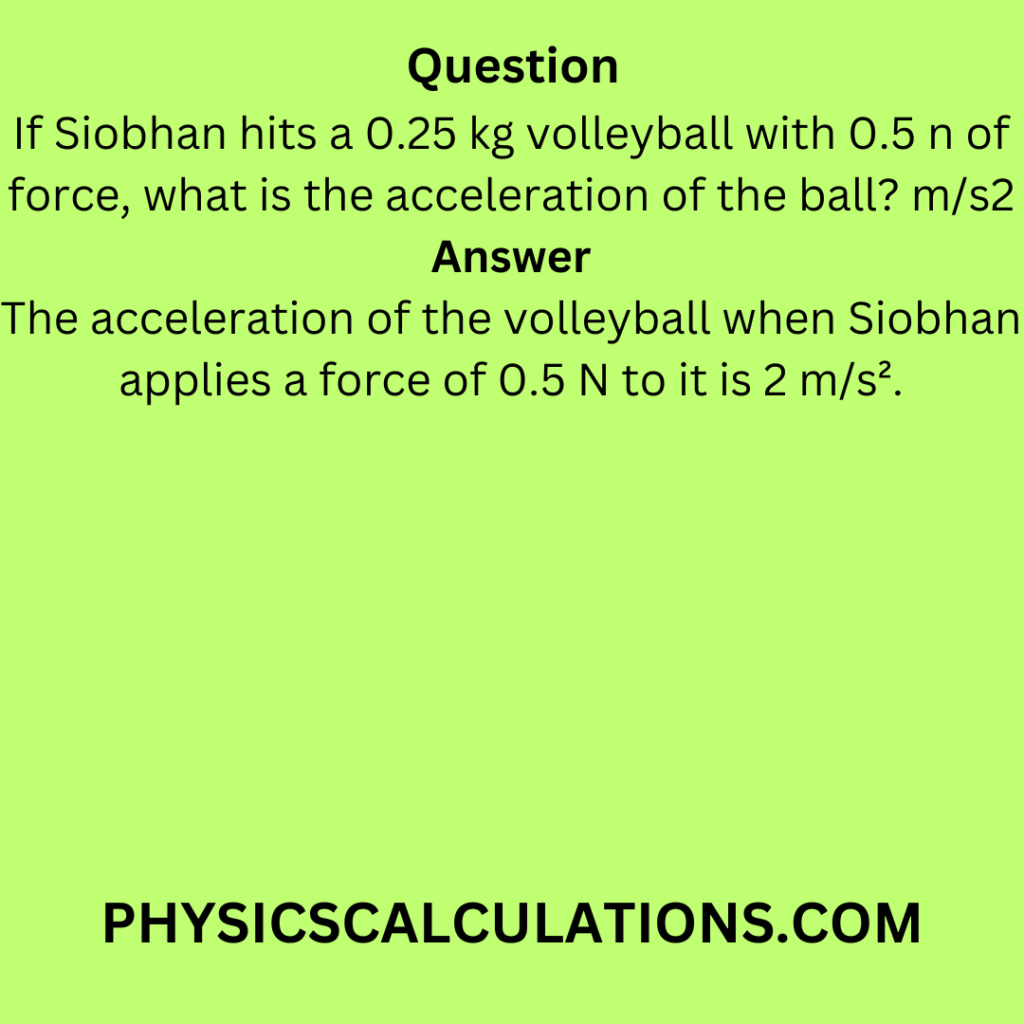Question
If Siobhan hits a 0.25 kg volleyball with 0.5 n of force, what is the acceleration of the ball? m/s2
Answer
The acceleration of the volleyball when Siobhan applies a force of 0.5 N to it is 2 m/s².

You may also like to read:
Three players on a reality TV show are brought to the centre of a large, flat field.
Explanation
In this problem, we are presented with a scenario involving Siobhan, a volleyball, and a force applied to the ball. The task at hand is to determine the acceleration of the ball when Siobhan imparts a force of 0.5 Newtons (N) to a volleyball with a mass of 0.25 kilograms (kg).
To calculate the acceleration (in m/s²) of the volleyball, we will need to apply Newton’s Second Law of Motion, which states that the acceleration of an object is directly proportional to the net force acting on it and inversely proportional to its mass. The formula for this law is:
F = ma
Where:
- F represents the force applied (in Newtons, N),
- m is the mass of the object (in kilograms, kg), and
- a is the acceleration (in meters per second squared, m/s²).
In this case, we are already have the following information:
- Force F = 0.5 N
- Mass m = 0.25 kg
We want to find the acceleration a.
To calculate the acceleration of the volleyball, we can rearrange the formula to isolate a:
a = F/ m
Now, let’s perform the calculation:
a = 0.5 / 0.25 = 2 N/kg
Now, to express the result in m/s², we need to consider that 1 N/kg is equivalent to 1 m/s². Therefore:
a = 2 N/kg = 2 m/s2
So, the acceleration of the volleyball when Siobhan applies a force of 0.5 N to it is 2 m/s².
Conclusion
This means that the volleyball will experience an acceleration of 2 meters per second squared in the direction of the applied force. It will move with an acceleration of 2 m/s², which indicates a change in velocity of 2 meters per second every second, assuming no other forces are acting on the ball.
In practical terms, this acceleration would cause the volleyball to gain speed at a rate of 2 m/s for each second that the force is applied. This is a fundamental concept in physics, highlighting the relationship between force, mass, and acceleration as described by Newton’s Second Law. Siobhan’s force of 0.5 N results in the volleyball accelerating at 2 m/s², making it a valuable application of physics principles to real-world situations.